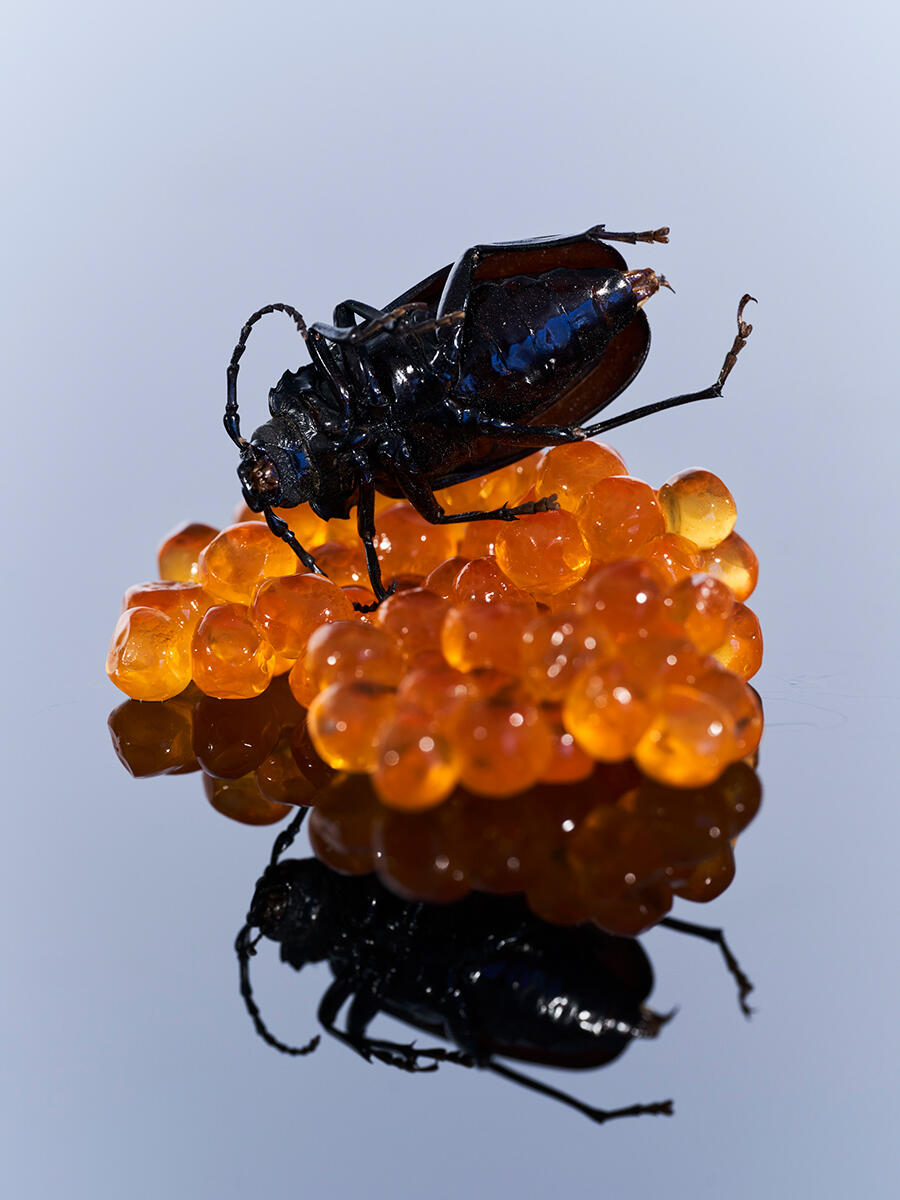What Goes on at a Gallery Dinner?
For some, Frieze Week is synonymous with invitations to eat. One writer explores the sometimes secretive art-world ritual
For some, Frieze Week is synonymous with invitations to eat. One writer explores the sometimes secretive art-world ritual

“That’s what they do in the rich culture, is meals.” The words are those of Neff Davis, a Manhattan concierge quoted in Jessica Pressler’s 2018 New York Magazine feature that retells the rise and fall of Anna Delvey, the infamous, so-called art-world grifter. Inventing Anna (2022), Shonda Rhimes’s fictionalized Netflix adaptation of the same story, makes dinners central to its protagonist’s campaign to be acknowledged by the art world: while the camera pans across a cluster of unknown types gabbling around a long table, Delvey surveying them at its head, a voiceover asserts that: “Anna knows excellent salmon is at Lucien; that, back in the day, the best dish at the Waverly was the Amish Chicken; not anymore — now it’s disgusting.”
It is strange to see this usually private ritual depicted on-screen. Art dinners are, in a sense, the inverse of the industry’s definitively public vehicle for promoting art: the exhibition. If an exhibition’s telos is to be attended and enjoyed by as many people as possible, the art dinner is instead predicated on being open to only the few. Away from the brightly lit white gallery, where there’s no admission fee and even complimentary beers are provided in a bucket at the “private view,” the dimmer space of the art dinner is where the wheels that drive this public largesse are greased and begin to turn.

Of course, the art dinner can take varying forms, whether thrown — that is, paid for — by a gallery, museum or private collector; held to mark the opening day of a show; or to fête a particular achievement, it takes place in a restaurant, members’ club, rented venue or even someone’s home. Most workplace parties enact a similarly uncomfortable ritual, with genuine affection, office politics and professional standing all stewing in booze, but I can’t imagine any other sector in which such an event is so specifically charged. This is because relationships are, in many ways, the bedrock of the art business.
“These dinners are highly functional,” a New York-based artist responds when I grill them about art dinners over Direct Message. They continue: “If the actual deal isn’t made there, which usually it isn’t, it’s where the relationships are formed. That’s how new artists get collectors and opportunities, by going to dinners they’re invited to and being introduced to people. You’re supposed to tap dance, but personally I feel it’s gonna be worse if I put on an air. So, if I don’t feel like it, I just don’t say a word to anyone.”

Attending an art dinner is certainly work, then — but of a special kind that requires you should never look like you’re working. In this way, the affective efforts of guests at a dinner parallel (in a queasy, unequal way) the paid labor done by serving staff. The Irish, France-based artist Justin Fitzpatrick has been exploring the figure of the waiter as a parallel for the (queer) artist: part of his 2022 exhibition at the Tetley in Leeds, UK, in Omega Salad tuxedo-ed servers appear blushing as two bug-like beings embrace on a plated-up piece of lettuce, while in Chef’s Table: France (both works 2020) a prostrate Maschinenmensch-like figure welcomes diners into his open maw. In an interview, Fitzpatrick draws on his own experience working in food service, reflecting that beyond the physical tasks of restaurant work, waiters “are also obliged to present the right kind of face, to perform service in the right kind of way to please the client.”
But besides artists, doesn’t everyone at the art dinner have certain steps to perform in this “tap dance?” While the dealers who need to sell art and build relationships most clearly need to be dancing, so might the museum staff, whether they’re soliciting artistic connections or donor support. Surely, too, even collectors can’t just sit back and relax at a dinner: if they don’t listen intently to a nearby curator, might they miss a promising new discovery? I regularly wonder what role I am meant to be playing at an art dinner, when I am lucky enough to be invited to one — and especially when the dinner is one I’m delighted to be at — I want to perform well: to be not just a nice guest but a valued invitee. But how do I make my invitation feel justified?

When I started my first job in the art world a decade ago, the dinner seemed to me the embodiment of the inner sanctum, the Holy of Holies. Once I got in there, I thought, with a seat at the table and a name card on the tablecloth, I will truly have arrived. The rehearsal for life was going to be over. That this didn’t transpire, that the rehearsal goes on, says nothing unique about the art world, but perhaps more about the roving quality of ambition and the slipperiness of satisfaction: the way in which, wherever you get in life, the main event still seems to be happening in another room. But this fact needn’t be a downer. After ten years and somewhere between ten and 100 dinners, the best approach to these events I’ve heard comes from the gallerist, writer and podcaster Alissa Bennett. Speaking on the NOTA BENE podcast in 2021, Bennett explained she always sends a text message to whomever she’ll be seated with that evening: “I love to give a warning: We’re going to have fun tonight.” Neither a threat nor a promise — but a good intention.
This article first appeared in Frieze Week, May 2022 under the headline “Hunger Games”.
Main image: Justin Fitzpatrick, Chef’s Table: France, 2020. Courtesy: the artist and Seventeen Gallery, London
























